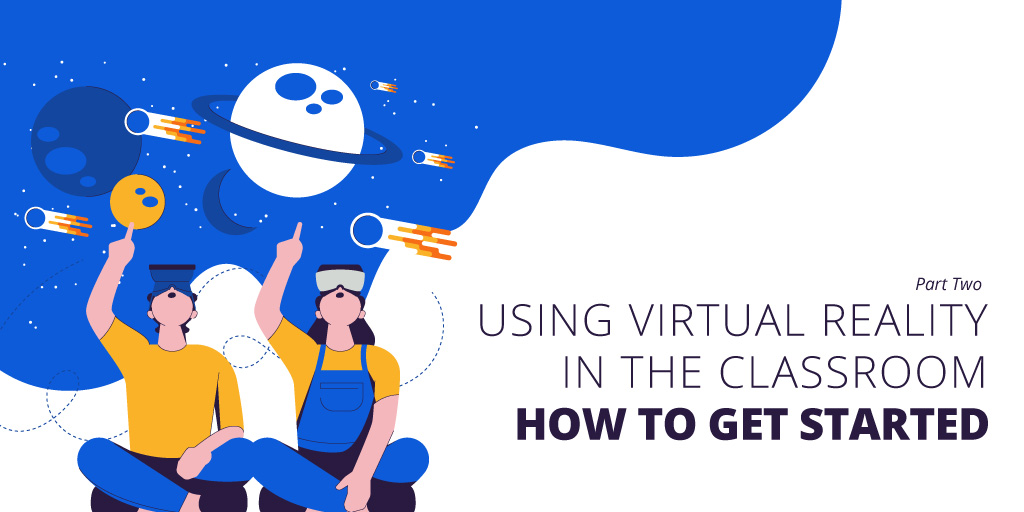
As I discussed in the first part of this series, there are many great reasons to get started with virtual reality in your classroom. The immersive experience is like nothing else—to me, it really feels like futuristic technology in our students' hands. Engagement skyrockets when we have the VR goggles out.
There are numerous teaching tools and instructional strategies to go along with this experience that are easy for teachers to access. While on a VR tour, teachers can prompt students to look at different landmarks or details of the environment. There are both self-guided student experiences as well as others that the teacher leads the students through, depending on the objectives of the lesson.
What Can You Do With VR?
The Google Expedition kit that we purchased is connected to the Google World. Since we are a Chromebook district, this made the most sense for us. We have found the Google Expeditions to be full of learning opportunities—it’s our go-to for teachers using VR in the classroom.
To present some ideas for how virtual reality can be used in the classroom, I have listed some real-life examples that we have used in our district over the past year. If you are ready to get started, here is some information on how you can incorporate VR in your classroom:
- VR software: The free Google Expedition tours are a great place to get started with VR in the classroom—we have used this site for kindergarten through the twelfth grade. Our third graders traveled to Philadelphia on Constitution Day, our high school human development class experienced the gestation and life cycle of an infant, and our middle school medical detectives class traveled into the body to see bacteria and viruses. Overall, we have found an amazing amount of content and resources available for teachers of all different ages and subjects.
- Getting creative: Another great option that we have used with our fourth graders is creating our own Google tours. Fourth grade students researched a state in the US and then created a virtual tour of landmarks throughout their chosen state. When we presented our projects to parents, they were able to use the VR goggles to learn more about the project. There were a few tricks to this that we had to troubleshoot on the technology side of things, but once we ironed out all the kinks, the students were able to produce quality projects that really demonstrated their learning about their state.
- Purchasing devices: As I mentioned in part one, our district chose individual devices that are compatible with viewers through the Google Expeditions kit. We found this very easy to use and set up, as well as being very teacher-friendly. There are other options when it comes to devices—teachers could find hardware that is stand-alone, meaning that there is not a separate device from the viewer, but it is all one unit instead. These have many more options for teachers, but are also more expensive. One advantage to these devices is that the Google Earth tours are available. These options are really on another level in my opinion—they would be awesome in the classroom, but aren’t required. Some of the units like the Oculus Rift or the HTC Vive work with Google Earth VR, but come at a higher price point.
- Google Cardboard: What is Google Cardboard? This is an inexpensive option for using VR if you have a compatible phone. It is literally a piece of cardboard that can be folded up to make a VR viewer that fits a phone. And while this is really cool, we have found the actual viewers made of plastic to be much more durable at a very affordable price.
On a final side note, the experience can be somewhat overwhelming for some students. Because it really feels three dimensional and students are looking all around them, it’s possible to experience some motion sickness. We encourage our students to take a break every two minutes just to make sure they are feeling okay, and would not let students use the VR viewers for more than 10 minutes at a time. The good news is that a little goes a long way when it comes to the VR experience.
Even with that said, our investment has been absolutely worth it. Students are excited and engaged in a way that they have never been before. I would highly encourage any classroom to look into virtual reality as a learning tool.
Have you brought VR into your classroom? What do you think? Let us know in the comments below. And if you missed the first part of this insightful series, be sure to catch up here!
Want to stay up to date on other stories like this? Subscribe to our educator blog today!>>



